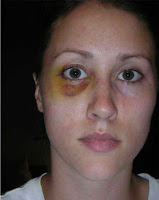A little while ago we started exploring sexual harassment. We acknowledged the discussion must begin from a premise of intolerance. To repeat: No woman
(or man) should have to endure unwanted sexual advances to get a part in a film, work in a bakery or congressional office, pursue educational opportunities, or serve in the military. We recognized, though, that’s not the end of the inquiry. After discussing definitions and recent high profile cases, we noted one of the difficult questions surrounding sexual harassment – balancing due process and fairness concerns with the need to encourage victims to come forward.
Rob Porter, Rob Porter, Rob Porter
For a while, the case of White House Staff Secretary Rob Porter
gripped Washington. Porter resigned, or was fired, depending on the correct interpretation of statements by Chief of Staff John Kelly, after reports surfaced that Porter physically abused his two former wives and, therefore, couldn’t get a permanent security clearance. The FBI investigated Porter and apparently told the White House during the summer of 2017 what it found. Porter, who denies the abuse charges, obtained temporary
clearances and remained on the job until a British newspaper published the domestic violence allegations. The FBI investigation likely turned up a restraining order one of the women obtained against Porter and a photograph showing one with a black eye. Amazingly, reports surfaced this week that the White House is considering rehiring Porter.
Kelly first claimed not to have known about Porter’s issues and defended him as “a man of true integrity and honor.” Kelly reportedly urged Porter to ride out the storm. After the photo surfaced, however, Kelly asserted Porter “was gone forty minutes later.” This account conflicted with FBI Director Christopher Wray’s congressional testimony that the Bureau updated the White House on its findings about Porter three times in 2017. Sources said the July 2017 report detailed the spousal abuse allegations, meaning Kelly probably knew about Porter’s alleged transgressions long before the British newspaper report.
President Trump lauded Porter’s work. “He did a very good job when he was in the White House,” Trump told reporters. Journalists and critics noted the President said nothing about the victims of Porter’s alleged conduct.
No Entitlement
Because no one has a constitutional right to work in the White House or any other agency requiring a security clearance, we have no trouble concluding Porter was treated fair and, therefore, received what we’ll call due process. The FBI investigated the claims against him and reported them to the agency involved – the Executive Office of the President. Leaving aside the question of when it acted, having received that information, the White House properly dismissed Porter (or accepted his resignation). Porter’s alleged actions made him unfit to handle sensitive, sometimes classified, information. Abuse charges, aside from the immorality and deficient character they potentially demonstrated, left Porter susceptible to blackmail, not to mention criminal and civil process. We have no difficulty in saying (1) he had to go and (2) he was treated fairly.
What, you ask, about his denials? Porter retains his presumed innocence in any criminal proceeding and he can require that his accusers prove his culpability by a preponderance of the evidence in civil cases they might bring. The information developed in the FBI probe likely would become part of those proceedings and the fact finders would consider all the evidence. But that’s different than whether he gets to work at the White House. Neither Porter, nor anyone else, is entitled to a White House job. We believe Porter got what amounted to due process and coming to that conclusion wasn’t especially difficult.
Donald Trump, Donald Trump, Donald Trump
If Porter’s alleged transgressions cost him appointment to a White House job, partly because of the risk of someone blackmailing him, what of credible claims of sexual harassment against President Trump? Aren’t the claims against him just as credible as those against Porter? Isn’t the President as vulnerable to blackmail as Porter? Should the fact of Trump’s election as President put the allegations against him in our political rear view mirror? Must Trump’s fate await the outcome of the Mueller investigation? We’ll have more to say about these important questions later, but for now, we close the book on Porter.
There are other kinds of cases
Porter’s case differs from others the country has seen or will see in the #MeToo era. Many people charged with sexual harassment don’t have to undergo FBI background checks. The facts never get developed in the same way. What’s appropriate in those situations? Many sexual harassment incidents occur in the private sector, in jobs that don’t involve the public trust. Do the standards applicable to government positions apply the same way there? What’s the difference, if any, between big corporations and small businesses? Does the same regime apply to the corner mom and pop grocery story as to IBM? What about conduct occurring outside the work place that still impacts employment? What process is due when a man (or woman) allegedly misbehaves toward another person in a social setting, but an employer or business contact must decide a response?
Some cases mostly concern how the public views the alleged abuser/harasser. What happens to the service station attendant, plumber, teacher, or other professional who aggressively pursues sexual conquests? What constitutes due process or fairness in those situations? Such instances, we think, present harder cases than the Porter affair. Please give us your thoughts as we tackle those issues.



